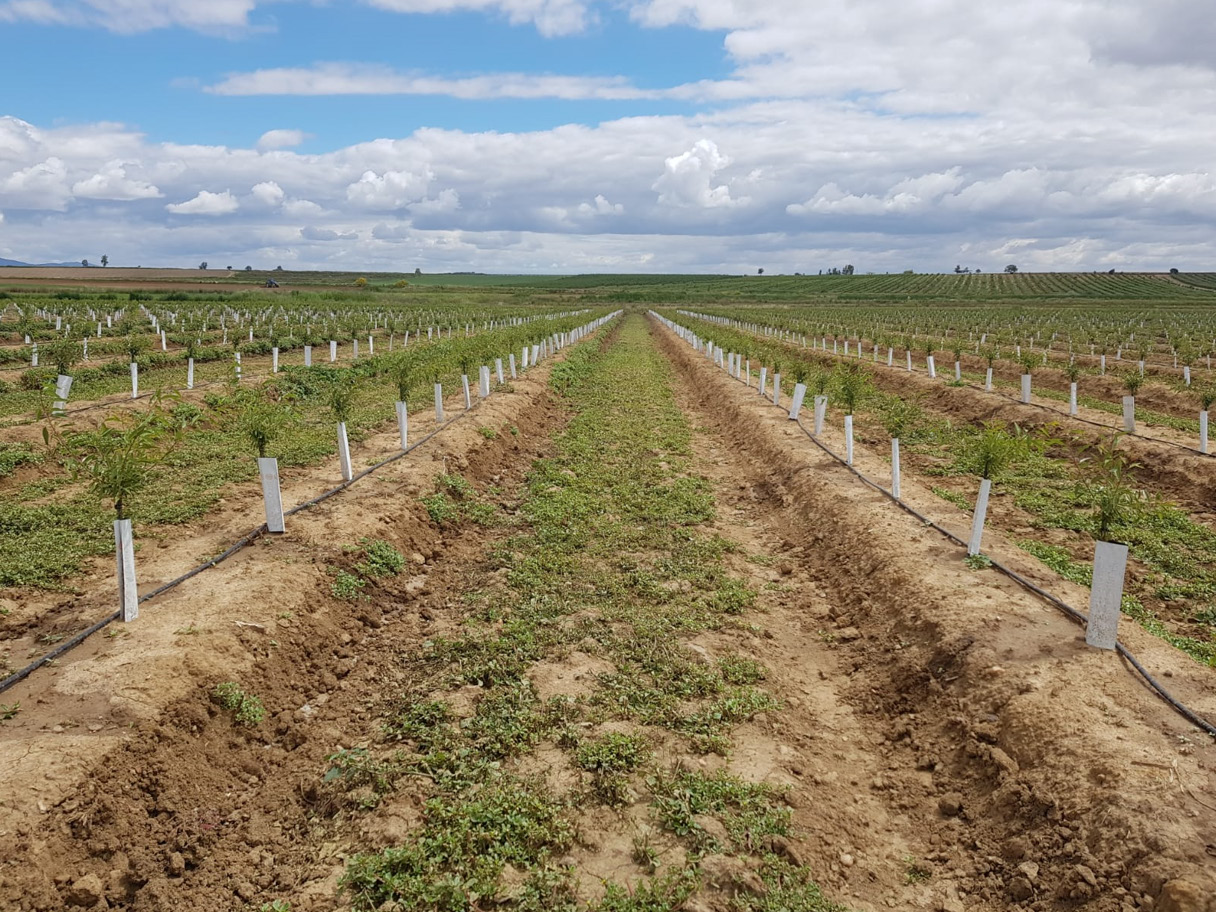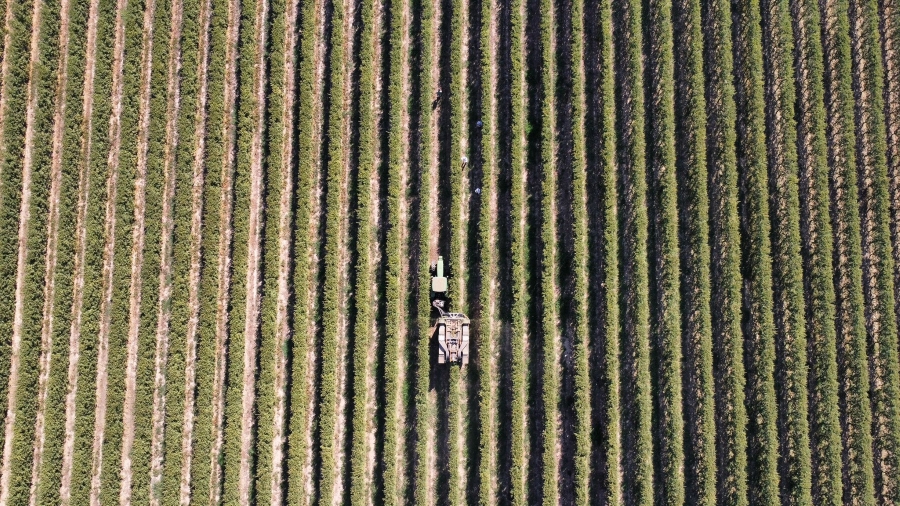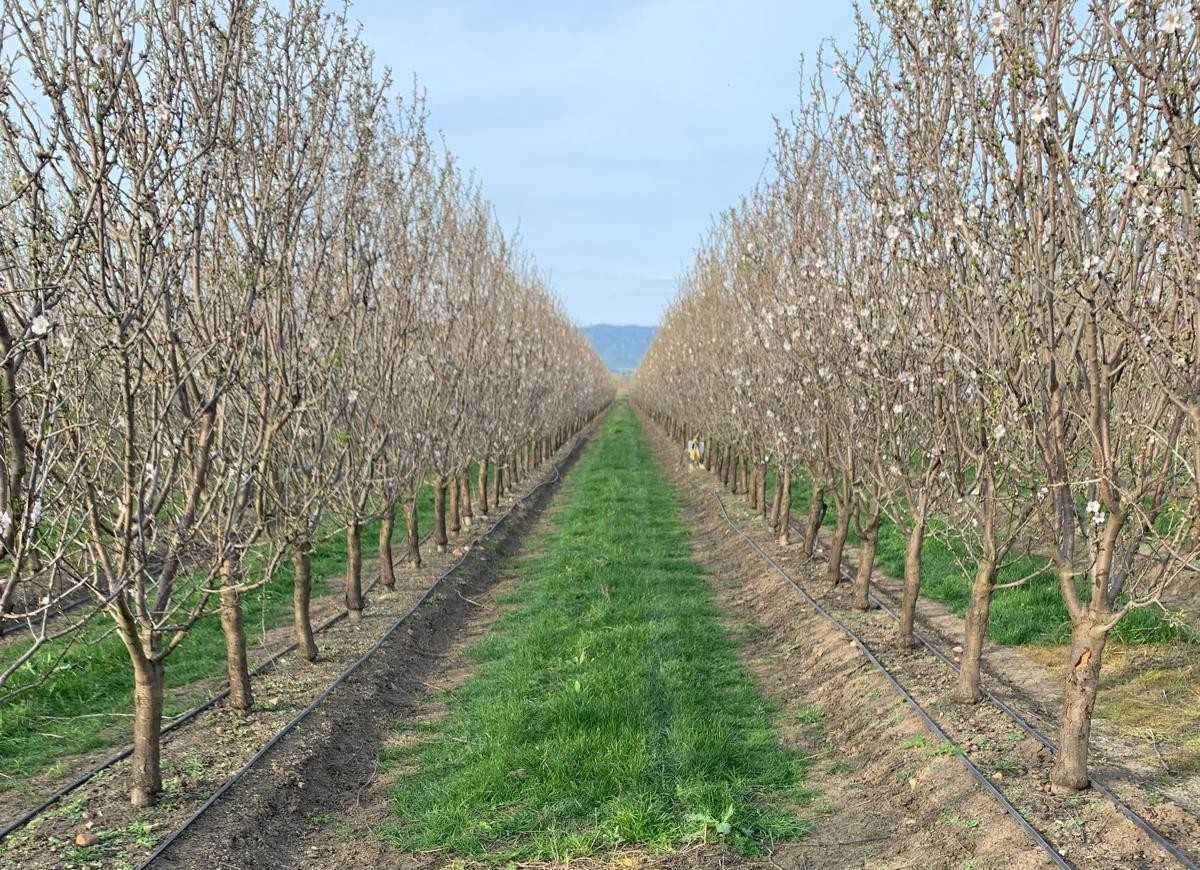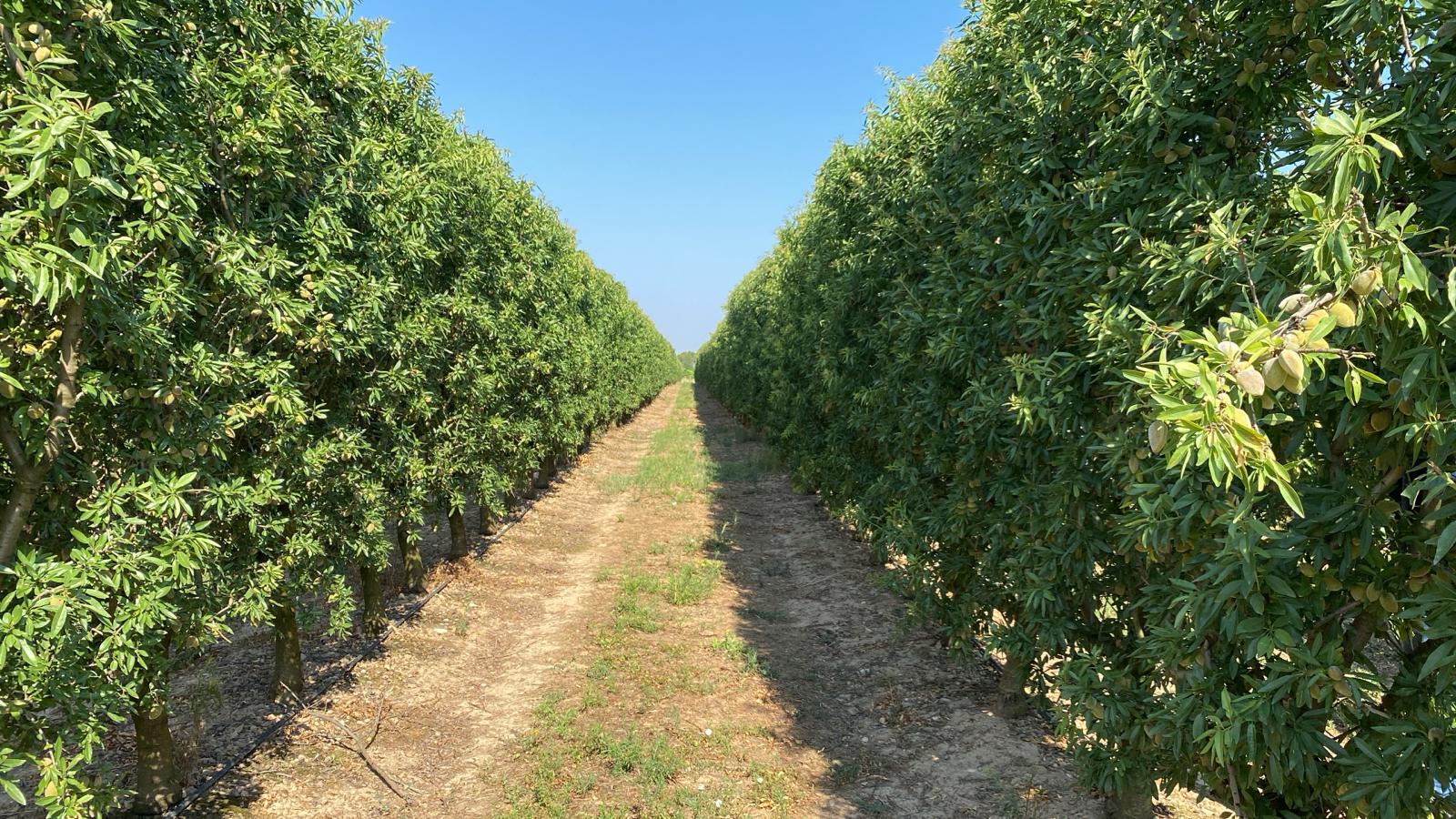15 Years of Hedge Almond Cultivation: The Pioneers Speak Out
After 15 years of innovation and adaptation, this model has become a benchmark in modern agriculture
Fifteen years ago, when mechanizing almond cultivation was still unthinkable, two professionals—Joan, from Agromillora’s technical department, and Josep María Roca, a farmer from Aragón—decided to take a bold step: adapt almonds to the hedge system.
The inspiration came from one of their trips to California, where it was already clear how technology and precise management could lead to high yields. That’s when they asked themselves: why not try something similar here?
They soon realized that the success of the model would largely depend on the plant material.
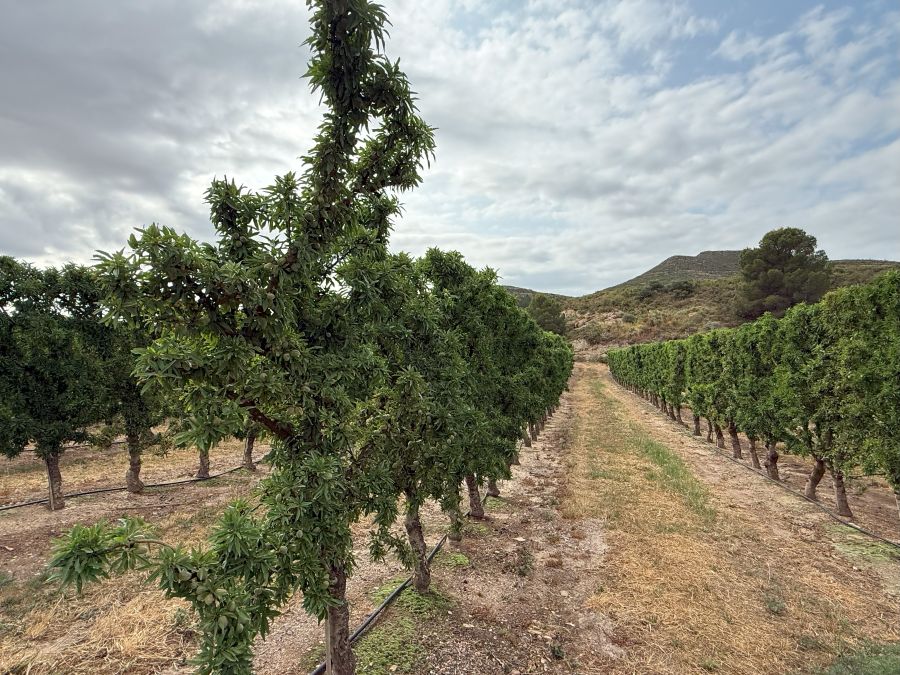
They soon realized that the success of the model would largely depend on the plant material. So, Agromillora began experimenting with different rootstocks—especially hybrids with plum genetics—which led to the creation of the Rootpac line, including Rootpac 20, Rootpac 40, and Rootpac R. These were designed to reduce vigor and better adapt to the linear system required by hedges.
The opportunity came with a small plot of just one and a half hectares. That’s where the trials began. Both had prior experience with hedge olive and fruit tree cultivation, which helped transfer knowledge and speed up the learning process. Their olive plantations were already about 15 years old and played a key role in applying that experience to almonds. Still, almonds are much more demanding than olives, Roca notes.
The journey wasn’t easy. As Josep María recalls, there were many mistakes at the beginning. They tried to train trees with a central axis, but the prevailing wind bent all the plants. That’s when the concept of a “productive wall” took hold: simple structures without strong branches that allowed efficient passage of the harvester. This adjustment, along with more refined agronomic management—fertigation, pruning, and pest control—allowed the system to evolve quickly.
Yields that once seemed like a dream soon became reality. Surpassing 2,000 kg/ha was no longer a utopia.
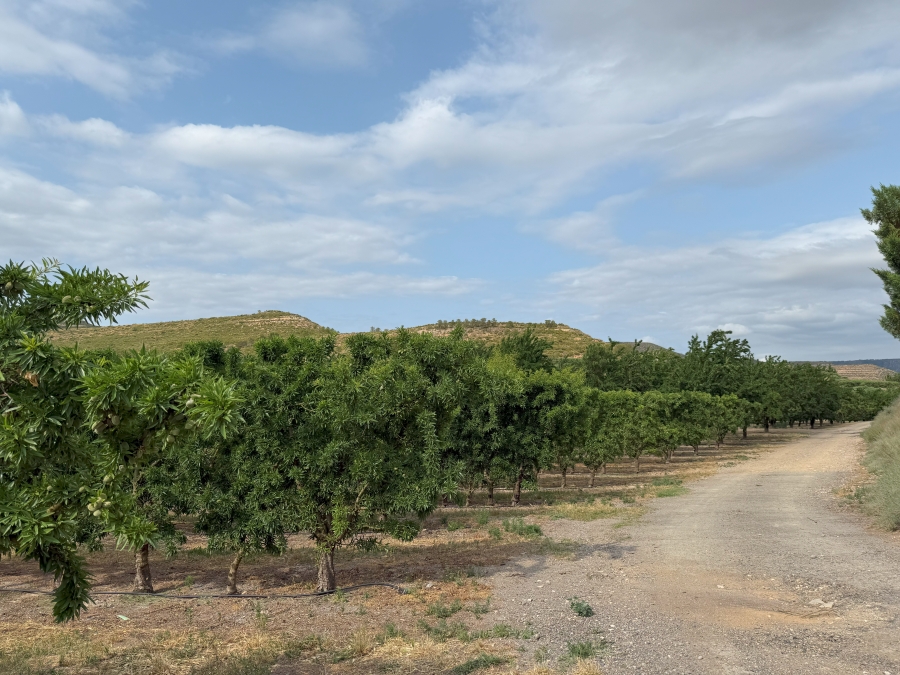
Josep María admits they’ve reached up to 2,600 kg/ha—figures that were unimaginable a few years ago. “If you had said that back then, before California showed us the way, they would’ve burned you at the stake,” he jokes.
However, not everything is replicable. Increasing drought resistance, for example, means introducing more almond genetics into the rootstocks, which can reduce tolerance to root asphyxiation, says Joan Samsó: “We don’t want to lose the good traits we already have for a new scenario that might be uncertain. We shouldn’t make the cure worse than the disease,” concludes the Agromillora co-founder. In the humid northern regions, these changes might be acceptable, but in the fertile southern valleys, it seems wiser to stick with the proven rootstocks.
Regarding the lifespan of the hedge system, the vision is clear: it’s about producing a lot, and fast. If the crop maintains good averages for 20 to 25 years, it’s already a success. Thinking about lifespans of 40 years or more, like with traditional olive groves, is not a priority. In Josep María’s words, “A thousand years from now, none of us will be here. What matters is squeezing the juice out as soon as possible.”
Today, with 15 years of accumulated experience, hedge almond cultivation is no longer an experiment. It’s a well-established reality that continues to evolve. For the pioneers, the challenge isn’t just reaching record numbers, but maintaining them year after year without compromising the system’s sustainability. Because in the end, as they say, records are nice to brag about sometimes, but what really matters is that the system is profitable and stable over time.



